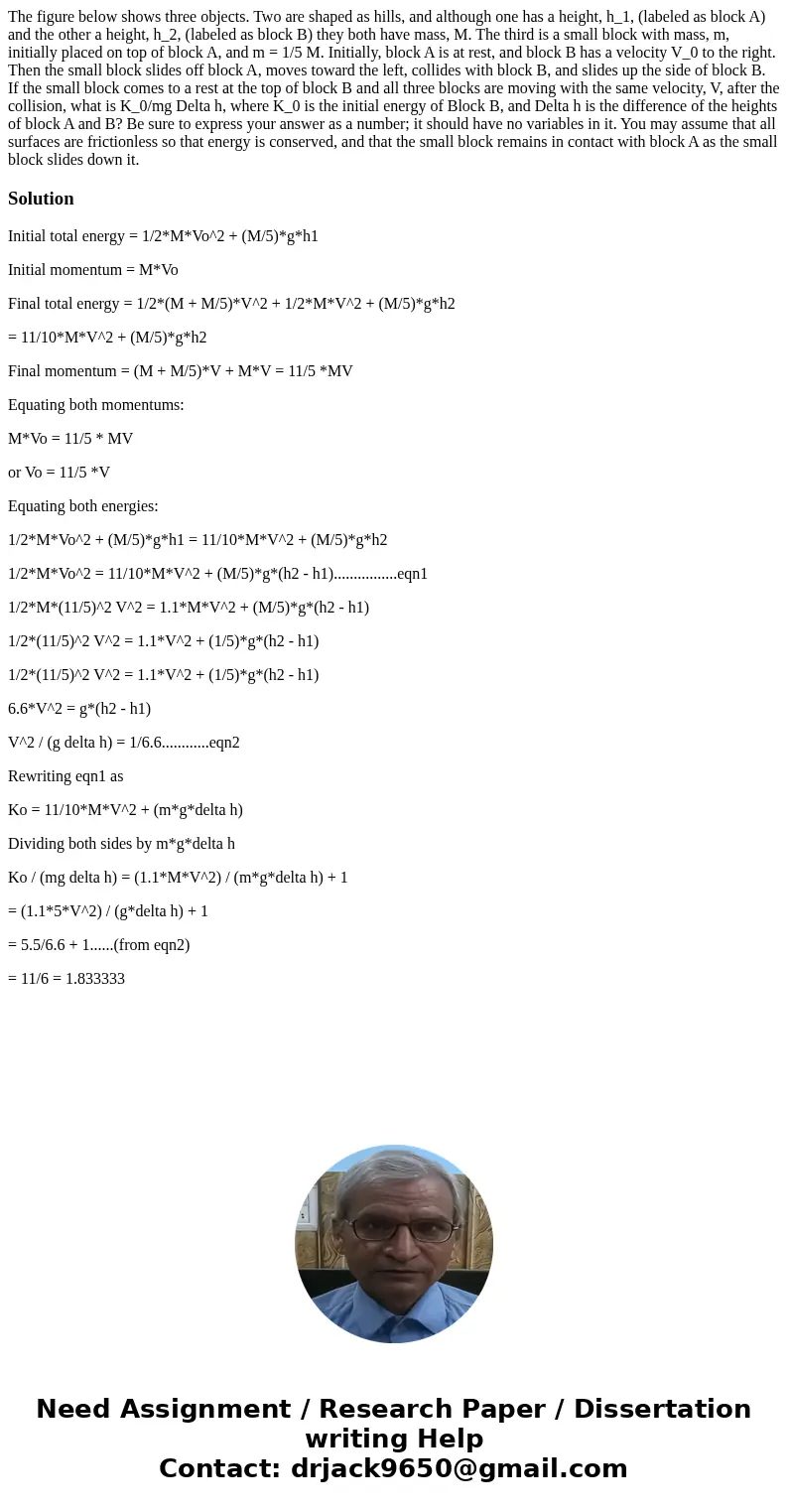The figure below shows three objects. Two are shaped as hills, and although one has a height, h_1, (labeled as block A) and the other a height, h_2, (labeled as block B) they both have mass, M. The third is a small block with mass, m, initially placed on top of block A, and m = 1/5 M. Initially, block A is at rest, and block B has a velocity V_0 to the right. Then the small block slides off block A, moves toward the left, collides with block B, and slides up the side of block B. If the small block comes to a rest at the top of block B and all three blocks are moving with the same velocity, V, after the collision, what is K_0/mg Delta h, where K_0 is the initial energy of Block B, and Delta h is the difference of the heights of block A and B? Be sure to express your answer as a number; it should have no variables in it. You may assume that all surfaces are frictionless so that energy is conserved, and that the small block remains in contact with block A as the small block slides down it.
Initial total energy = 1/2*M*Vo^2 + (M/5)*g*h1
Initial momentum = M*Vo
Final total energy = 1/2*(M + M/5)*V^2 + 1/2*M*V^2 + (M/5)*g*h2
= 11/10*M*V^2 + (M/5)*g*h2
Final momentum = (M + M/5)*V + M*V = 11/5 *MV
Equating both momentums:
M*Vo = 11/5 * MV
or Vo = 11/5 *V
Equating both energies:
1/2*M*Vo^2 + (M/5)*g*h1 = 11/10*M*V^2 + (M/5)*g*h2
1/2*M*Vo^2 = 11/10*M*V^2 + (M/5)*g*(h2 - h1)................eqn1
1/2*M*(11/5)^2 V^2 = 1.1*M*V^2 + (M/5)*g*(h2 - h1)
1/2*(11/5)^2 V^2 = 1.1*V^2 + (1/5)*g*(h2 - h1)
1/2*(11/5)^2 V^2 = 1.1*V^2 + (1/5)*g*(h2 - h1)
6.6*V^2 = g*(h2 - h1)
V^2 / (g delta h) = 1/6.6............eqn2
Rewriting eqn1 as
Ko = 11/10*M*V^2 + (m*g*delta h)
Dividing both sides by m*g*delta h
Ko / (mg delta h) = (1.1*M*V^2) / (m*g*delta h) + 1
= (1.1*5*V^2) / (g*delta h) + 1
= 5.5/6.6 + 1......(from eqn2)
= 11/6 = 1.833333

 Homework Sourse
Homework Sourse